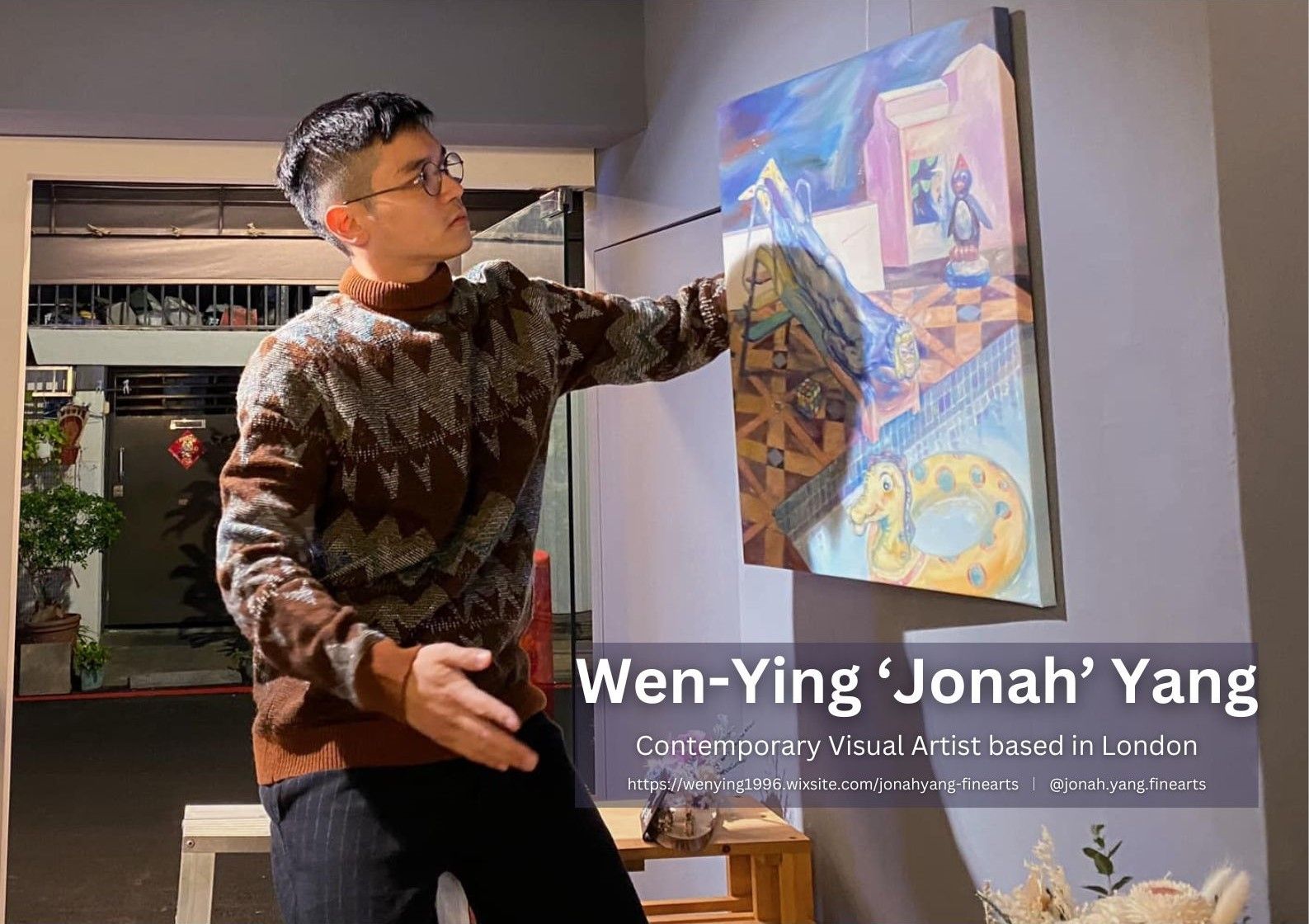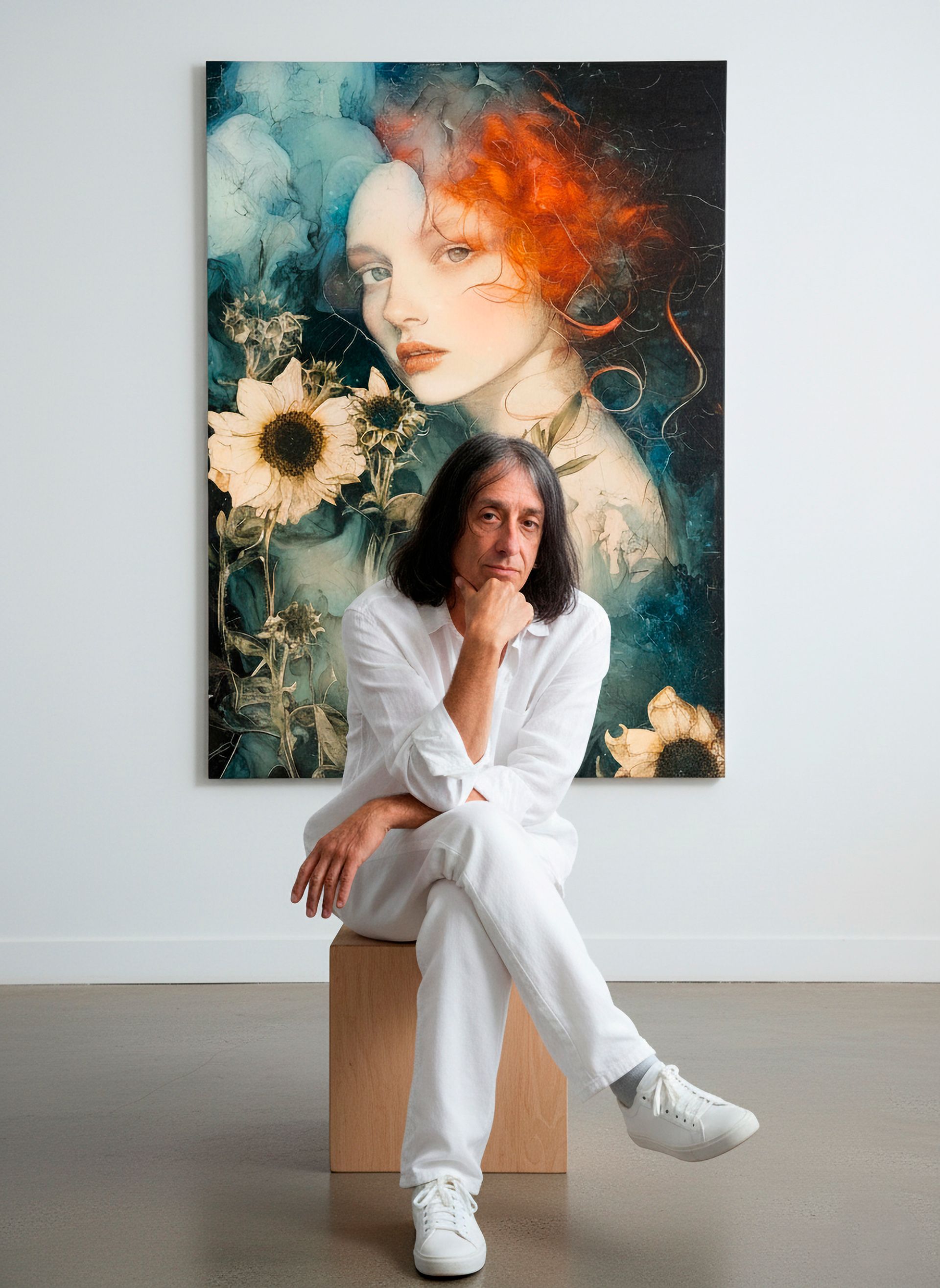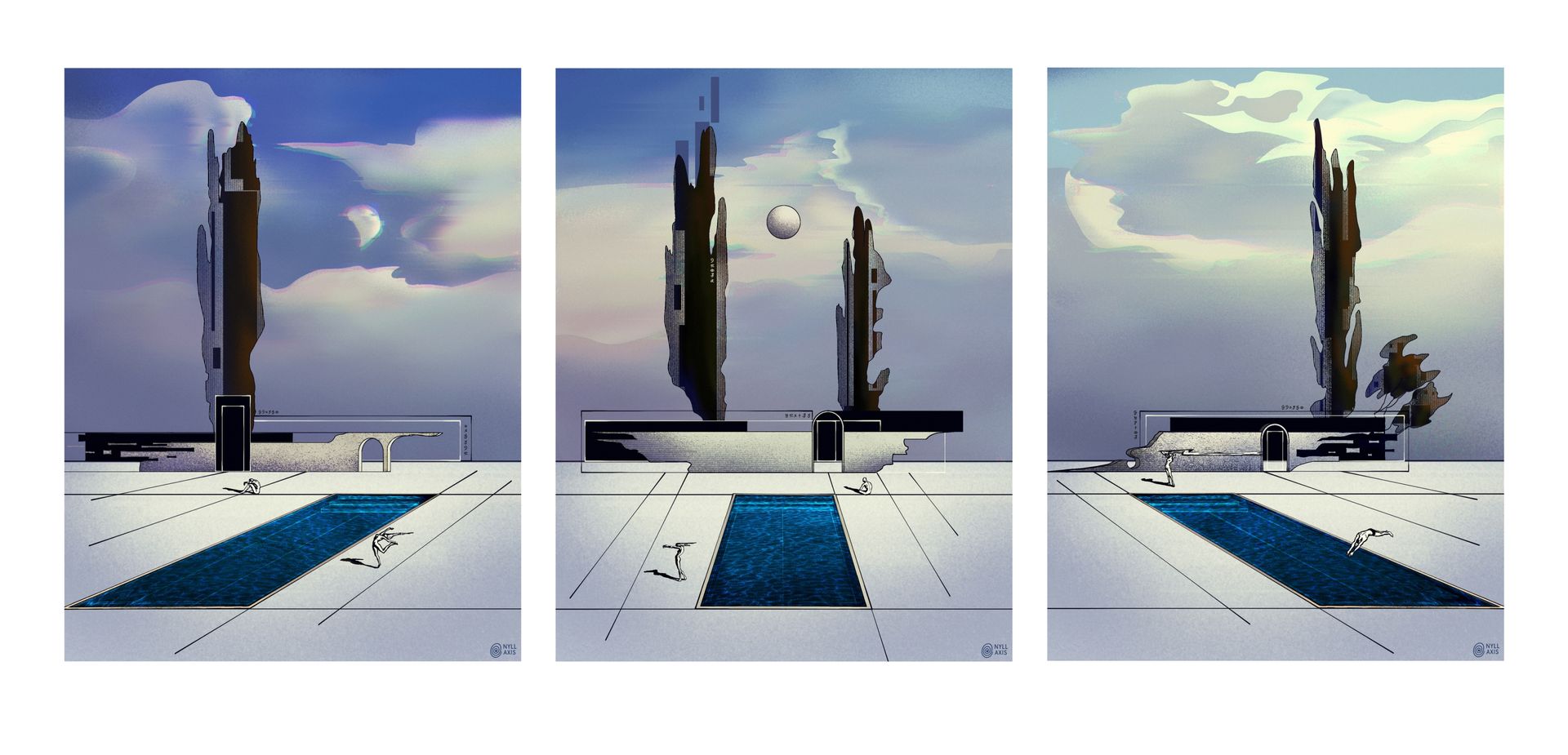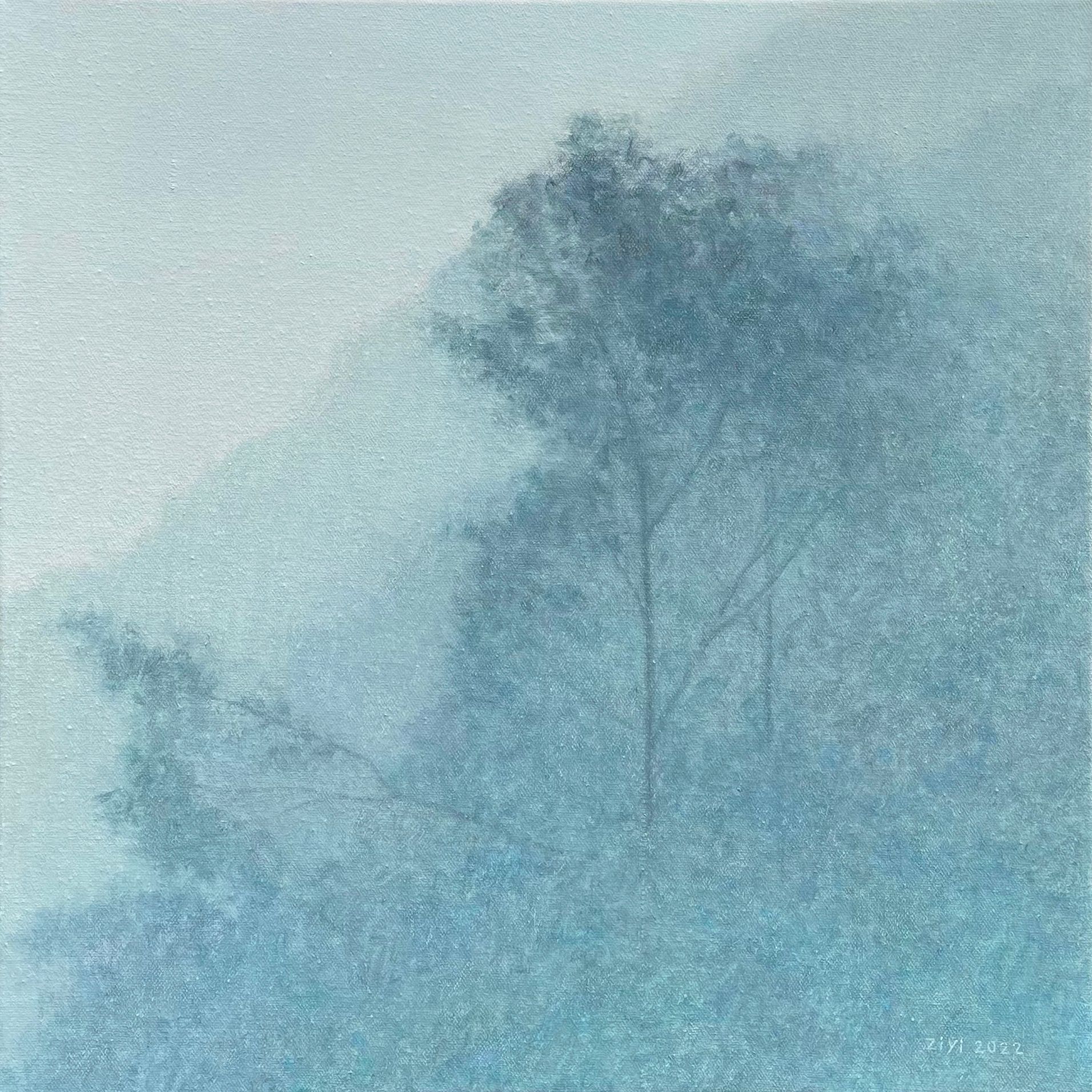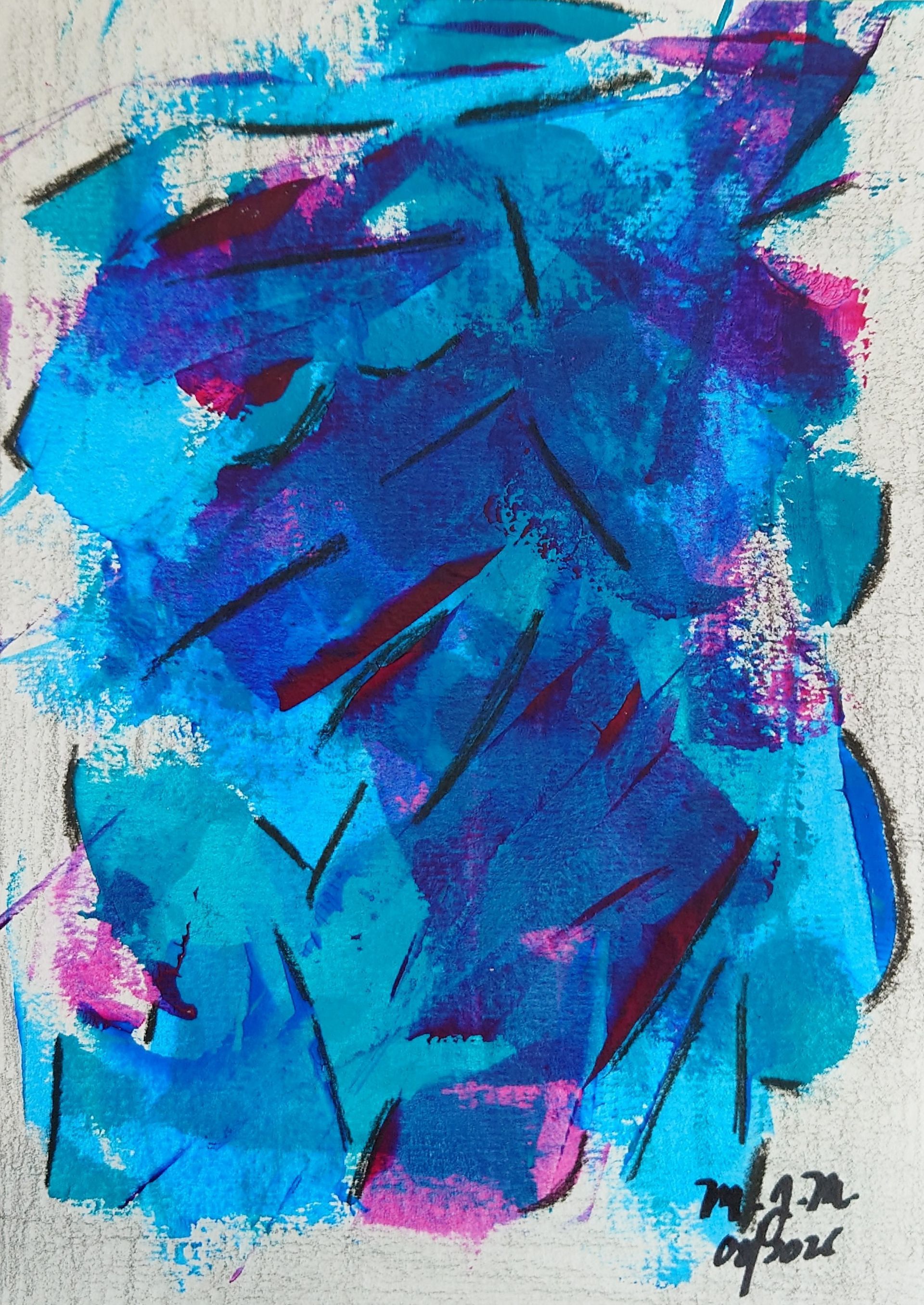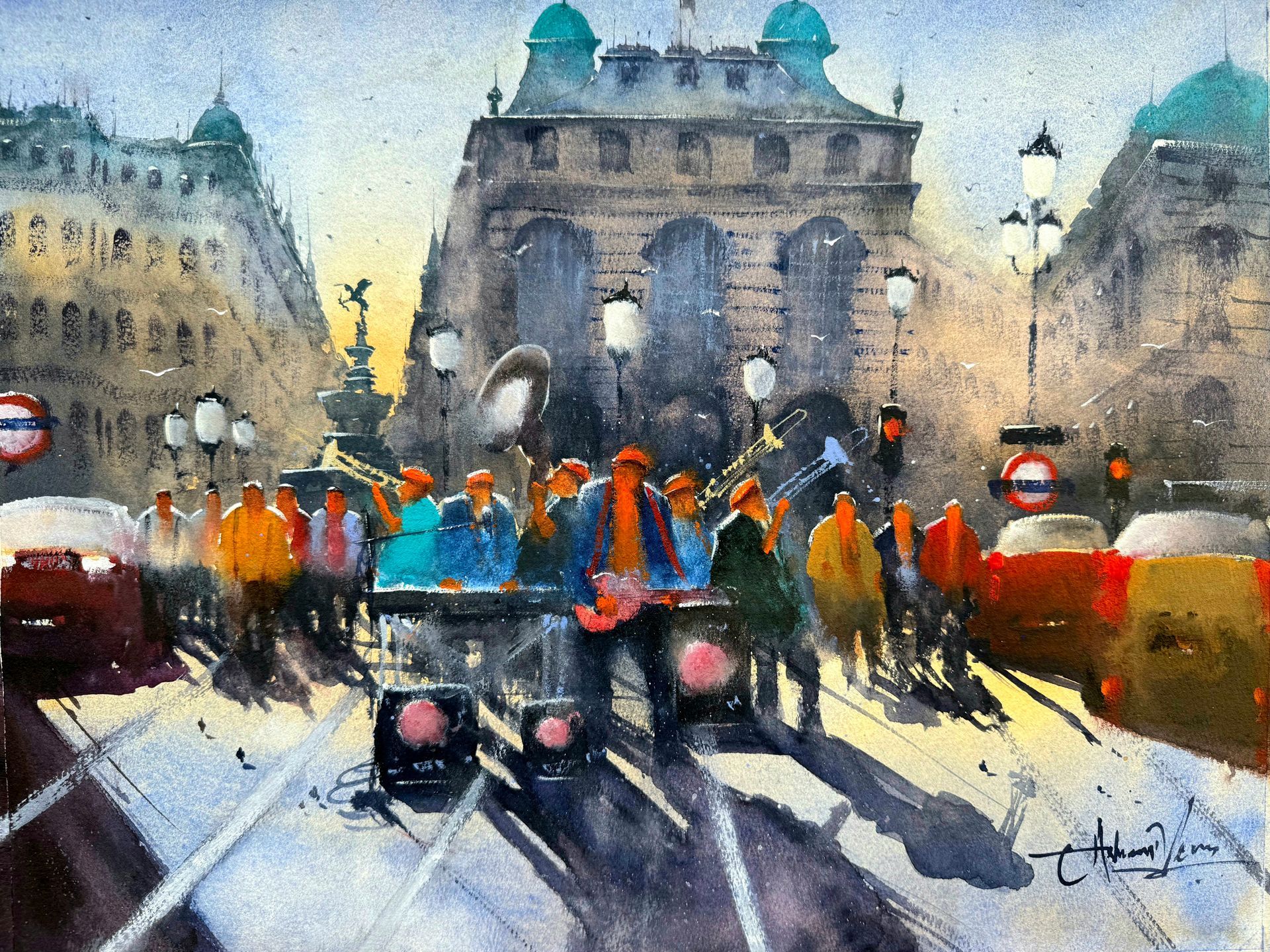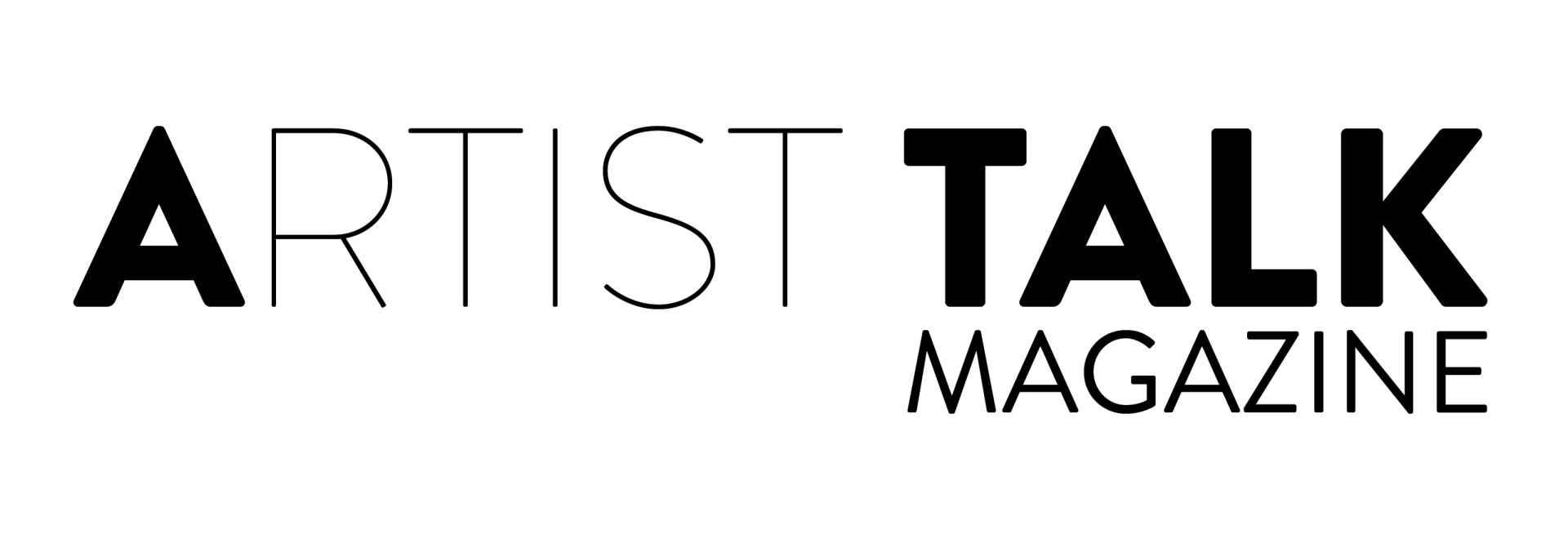Paintings for Music
Creative collaborations in oil paint and jazz. The relationship between abstract painting and instrumental music. Colliding these worlds in a record label.
Artist painter Lorna Robertson and jazz trumpeter and composer Nick Walters, have been collaborating since 2018, bonded by a shared passion for music, art and design. The duo have worked on several sold out vinyl records and limited edition art prints over the past four years. Collaborating first through the London jazz label 22a, they went on to form their own imprint D.O.T. Records in 2020 - where the relationship between music and art are an integral part of the label identity.

Through D.O.T. Records, they bring their worlds together. Nick creates jazz and electronic albums, and Lorna leads on the artwork. Inspired by their love and respect for great UK labels of the past such as Manchester’s Factory Records and regional independent record shops, D.O.T. Records is a D.I.Y. ethos. Founded during lockdown, the pair brought the vinyl production in house, adding their touch to everything. Lorna creates an original painting or drawing for each album, used to design the vinyl record covers and limited edition art prints.

The duo originally met in a live / work warehouse set up in East London, where Lorna was developing an abstract portrait series and Nick on his album ‘Active Imagination’. Their first crossover occurred when Lorna painted a double portrait of Nick, of the front and back of his head - which went onto become the front and back cover of ‘Active Imagination’ released on 22a Records. Lorna followed up with a group portrait of the band Ruby Rushton, which became the cover for ‘Overture 1’ also released on 22a. From this, the couple continued to collaborate on other projects - fast forward to 2020 and D.O.T. Records was formed.
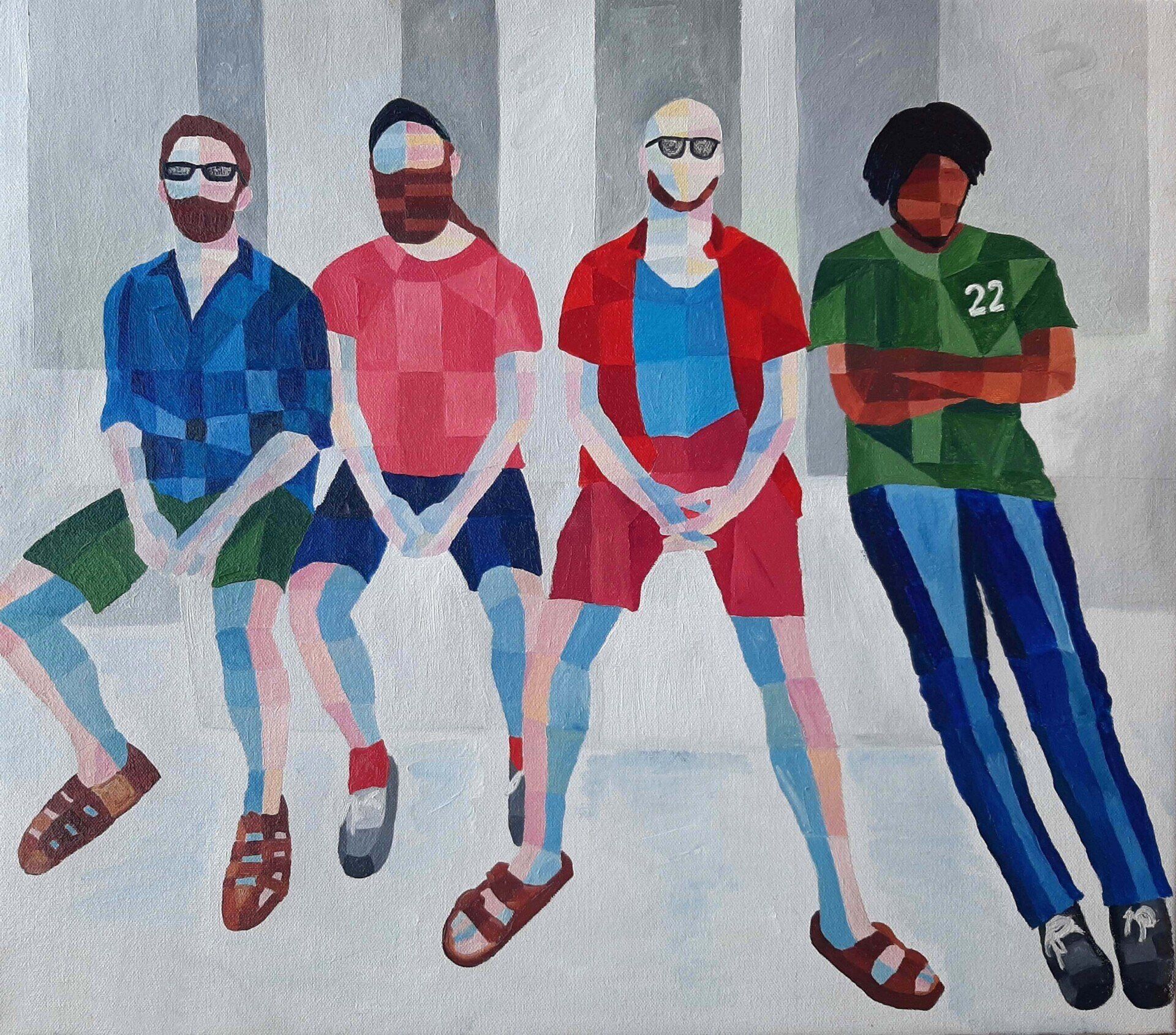
The Inaugural release on the new label was ‘Implicate Order’ 2020, where Lorna began to more fully explore the ideas on the relationship between abstract painting and instrumental music. Drawing on the theories of Wassily Kandinsky, she created a large abstract oil painting that represented the 11 musicians involved. Responding to the sounds of the album, Lorna applied Kandinsky’s theories of specific instruments having certain colours associated with them - the trumpet red, flute light blue, double base dark blue. The results are a composition that is both structured with a sense of internal movement, that responds to the composed and improvisational nature of jazz. There is a sense of movement and interplay between the shapes and colours as they guide our eye around the canvas.
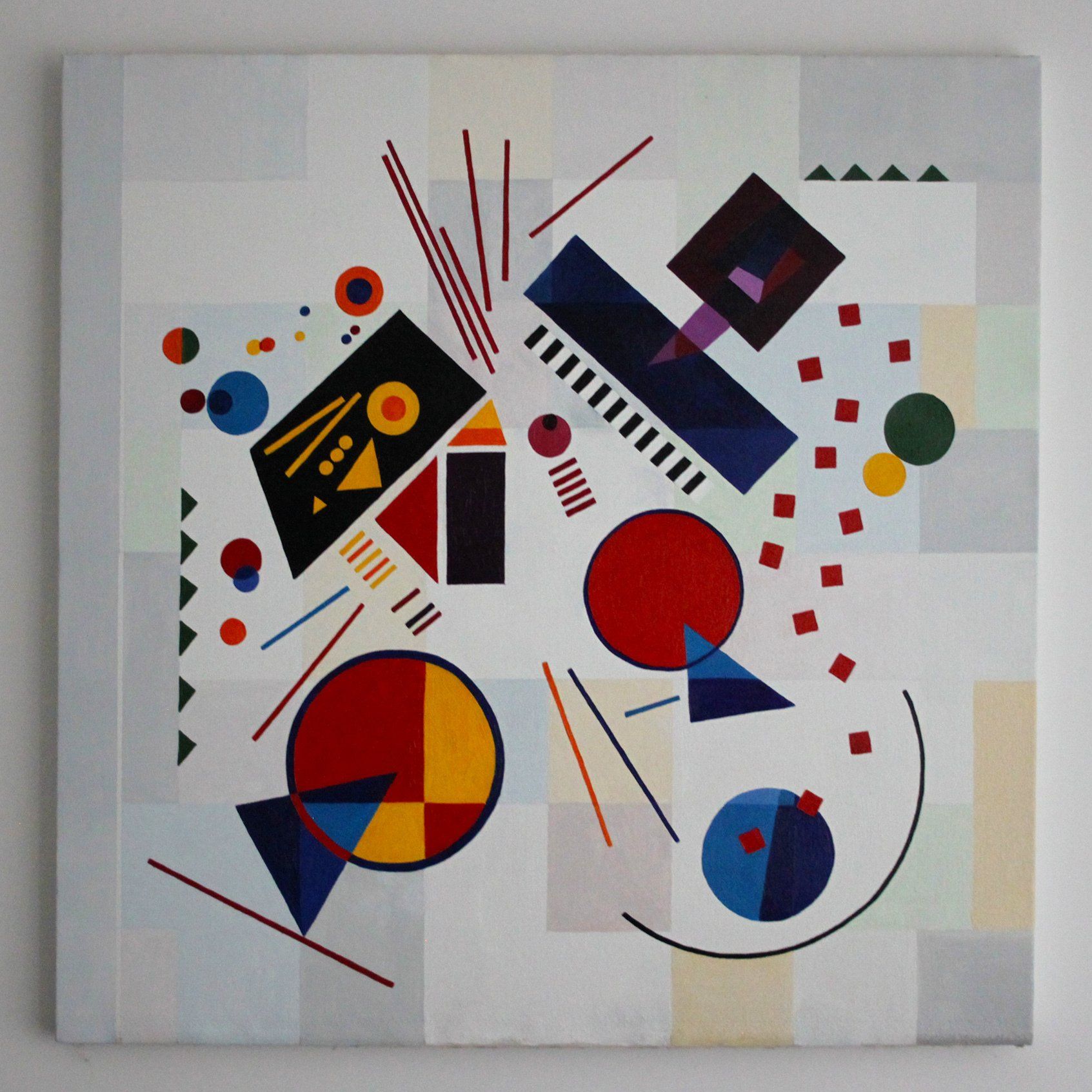
Conceptually the same, but different in form, Lorna became fascinated by how abstract painting and instrumental music are both non-verbal modes of expression that create a space for abstract, even spiritual thought. This was explored in depth in the work ‘Painting for 18 Musicians’, 2022. A painting about using colour to express sound - visualising musical time, movement and rhythm as the subject. The painting took shape while she was thinking about the continuous curves of sound waves, and how a digital sound recording is split into tiny discrete chunks (many thousands per second).
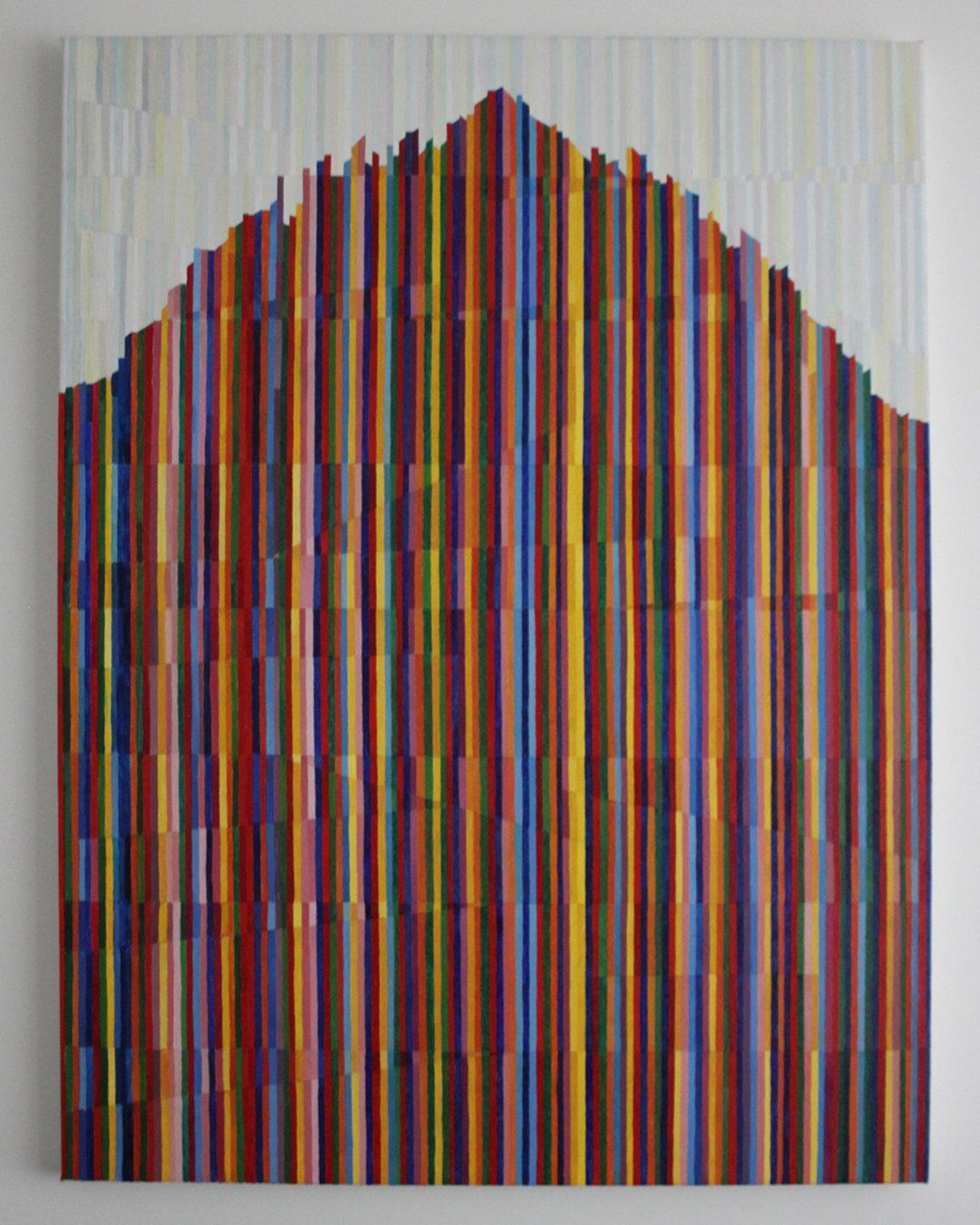
The title was inspired by a live performance of Steve Reich's 'Music for 18 Musicians', a minimalist composition written between 1974–1976. On hearing the piece for the first time, the visualisations that occurred during the performance influenced the development of the painting, and encapsulated the ideas around the structure and behavior of music and abstraction. The final artwork is about the complementary characteristics of instrumental music and abstract painting. The conceptual similarities between the gradual shifting musical textures, and the colour palette of music, took shape within the composition of the painting.

In 2022, Lorna continued to examine the relationship of abstract painting and instrumental music more closely, developing the series ‘No Words, Only Feelings’ about how sound and rhythm can be visualized using shape and colour. Juxtaposing deep yellow, red and blue, humming alongside their cooler toned counterparts to create their own kind of harmony – the colours and shapes are a nod to the aesthetics and ideas of the women of the Bauhaus movement. The musical touchstones drawn on to inspire the paintings, range from the compositions of Philip Glass to the spiritual jazz of John and Alice Coltrane. The shapes and colours interact visually to stimulate and excite the eyes, as we follow them around the composition they push forward and retreat - creating a visual movement.
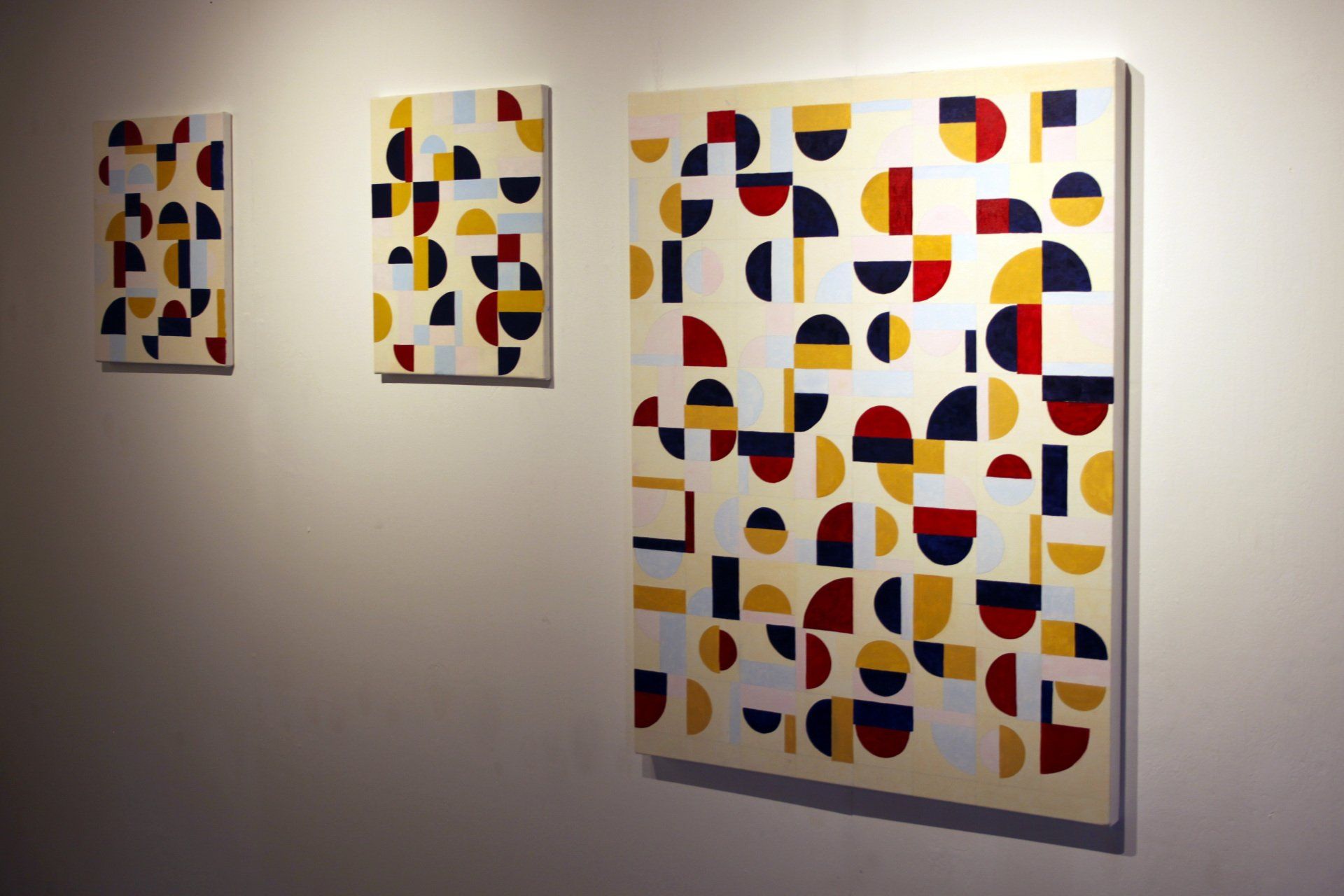
Looking ahead to 2023, the Lorna and Nick have plans for new bodies of work and the third release on D.O.T. Records that continue to explore the theme. Their latest work is inspired by the sights, sounds and smells of a trip travelling around the Indian subcontinent, with the music and art built around samples recorded on the streets of India.
Instagram @lorna.robertson.art
Website www.lornarobertson.co.uk
Instagram @nick.walters.music
Website www.nick-walters.co.uk
D.O.T. Records
